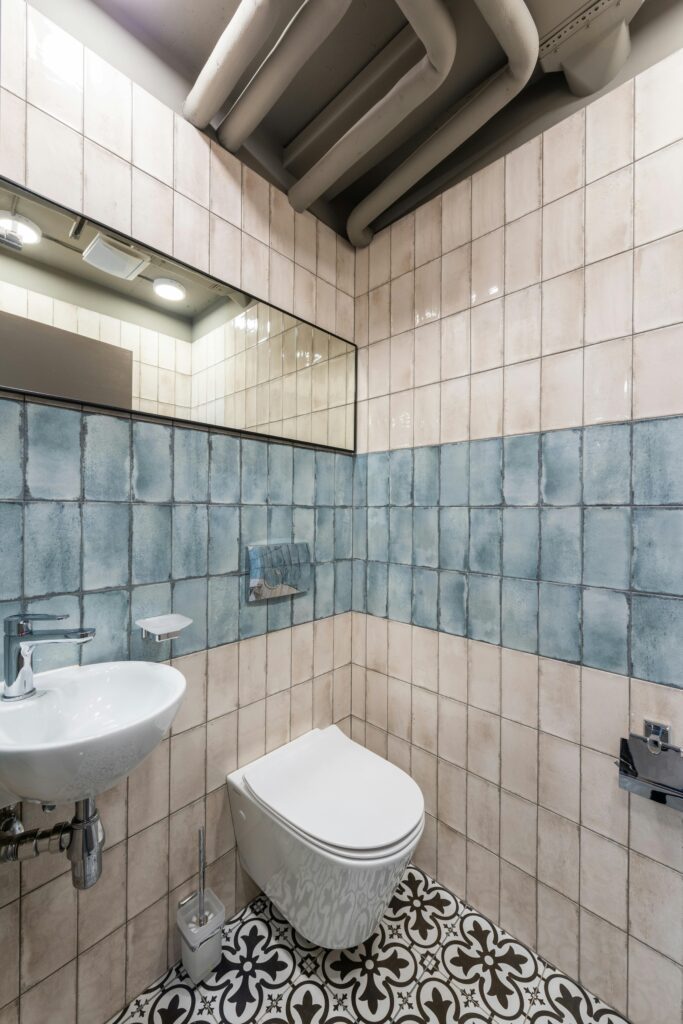We are frequently asked about the difference between floor and wall tile. It seems like it should be an easy answer that floor tile is floor tile and wall tile is wall tile. In the past, it was, but nowadays, the lines have become a bit blurrier between the two. With the influx of design trends and new technologies in recent years, the difference between the two has lessened. This can be somewhat confusing if you are new to tile, but hopefully, we can clear a few things up for you!

Floor Tiles
Floor tiles will receive foot traffic, meaning they need to be solid and withstand frequent activity. To ensure your floor tiles don’t crack or become worn down with this activity, it’s helpful to look at scales such as friction ratings and hardness ratings. These ratings are valuable tools for determining the best uses.
Most people believed that porcelain tiles were for floors and ceramic tiles were for walls in the past. However, you can find suitable floor tiles in either material and other natural stones as long as the specific tile is durable enough.
Porcelain tiles may still have a bit of an advantage over ceramic tiles for their durability, but that does not mean that ceramic tiles can’t or shouldn’t be used on the floor. On the contrary, porcelain tiles are known to be a bit sturdier with a more extraordinary ability to withstand wear and tear, making them great throughout the home.
Ceramic tiles are known to be soft tiles that are less durable than porcelain tiles. That being said, ceramic tiles can still do well in areas of the house that are commonly tiled, such as bathroom walls or kitchen backsplashes, but we do not recommend ceramic tiles for flooring due to their lack of durability and certainly not commercial spaces that receive substantially more traffic, we would say, however, as a general rule, do not put it on your floor unless you enjoy cracked tiles!
Wall Tiles
Wall tiles generally need to be lighter in weight than floor tiles, and as a result, tend to be more delicate.
While people have generally looked to smaller ceramic tiles for their walls, know that you are not limited to this. As we mentioned before, you can use floor tiles on walls! Large-format tiles have become a popular tile trend, leading many people to use floor tiles on their walls. These can make a space feel larger since there are more tiles and fewer grout lines. Another trend is extending the same tiles on your floors up the wall for a minimal, modern look! This looks best with larger tiles and grout lines that seamlessly run from the bottom to the wall.
Even though some floor tiles can be placed on walls, it doesn’t mean that ALL floor tiles do well. It is essential to consider the weight of any floor tile you are looking at for a wall to make sure the adhesive can handle the weight.
With so many new advancements, tiles are more versatile, creating more overlap between floor and wall tiles. While thinking of tiles as either a floor or wall tile may be an old way, it’s still important to consider the qualities of each specific tile for wherever you choose to implement it. Of course, some tiles aren’t as suitable and can’t be used interchangeably, but overall after reading this, you may find that you have more options than you previously thought!
If you want to add some tiling to your home and live in the Northern Nevada area, reach out to us at Ceramic Tile Center and Stonework!


